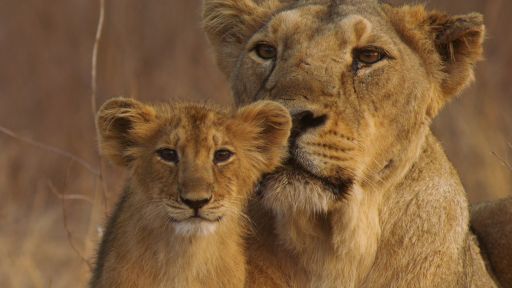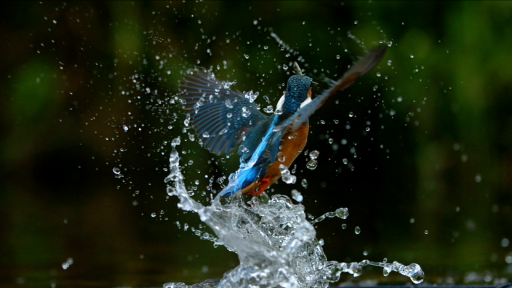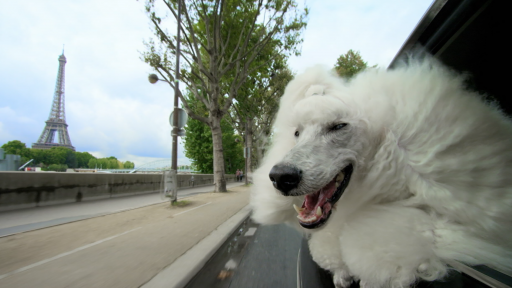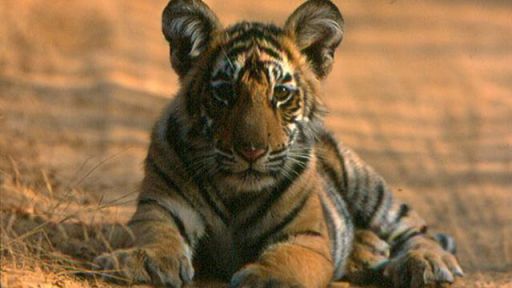Eels have been a source of fascination to writer, artist and conservationist James Prosek since childhood. His introduction to the slimy, muscular fish occurred when fishing as a boy in the ponds and rivers of Connecticut. He would catch them by accident when fishing for something else. But when an old game warden explained that they were born thousands of miles away in the Sargasso Sea, somewhere in the Bermuda Triangle, Prosek became hooked and determined to learn as much he could about the mysterious creatures. Prosek’s journey takes him to Maine, where New England fishermen reap the benefits of a multibillion-dollar eel business; to Japan, where the fish are a staple of Japanese diet, with more than 130,000 tons of eel consumed each year; and to the Maori in New Zealand, where eels are revered, often depicted as mythical beings or guardians. Eels can be found all over the globe, in fresh and salt water ecosystems alike. But today, risk of over-fishing and the presence of dams and other obstacles that prevent eels from reaching their oceanic spawning grounds pose new threats to an animal that once roamed the planet alongside the dinosaurs.
The Mystery of Eels
Eels can be found all over the globe, in fresh and salt water ecosystems alike. But today, risk of over-fishing and the presence of dams and other obstacles that prevent eels from reaching their oceanic spawning grounds pose new threats to an animal that once roamed the planet alongside the dinosaurs. Artist, writer, and naturalist James Prosek explores the mysterious world of the eel.
Features
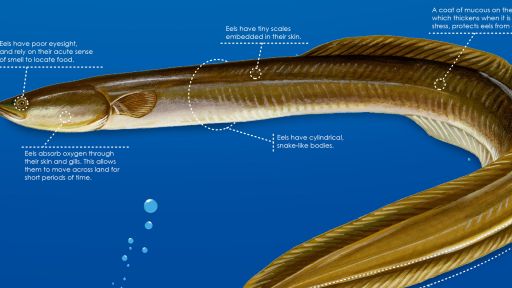
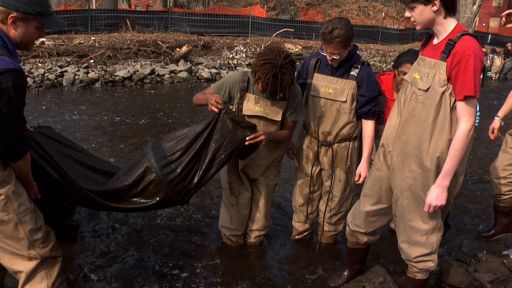
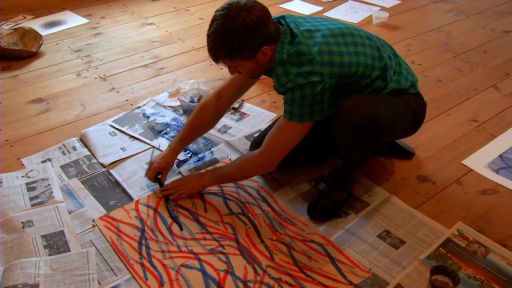
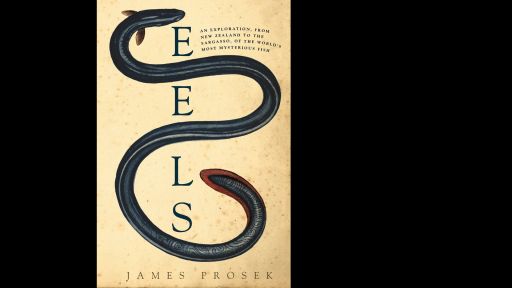

PRESENTED AND NARRATED BY
JAMES PROSEK
PRODUCER
FRITZ MITCHELL
WRITTEN BY
JAMES PROSEK
DIRECTOR OF PHOTOGRAPHY
PETER FRANCHELLA
LINE PRODUCER
ALEXA CONWAY
EDITOR
PAUL CARRUTHERS
POST SUPERVISOR
STEVE MURPHY
JOHN F. SCHWALLY
AUDIO
RYAN CARROLL
MATTHEW McLARTY
ASSISTANT CAMERA
KATIE KEARNEY
CORY STAMBLER
ADDITIONAL CAMERA
MURRAY MILNE
HEATHER PERRY
MUSIC COMPOSED BY
DANNY BENSI
SAUNDER JURRIAANS
COMPOSER ASSISTANT
CHASE DESO
SOUND DESIGN
CARMEN BORGIA
RE-RECORDING MIXER
MATT GUNDY
SOUND EFFECTS EDITOR
ELI COHN
ONLINE EDITOR
DAVID GAUFF
COLORIST
GARY SCARPULLA
SPECIAL THANKS
MIKE MILLER
JOE CASSONE
CHRIS BOWSER
STEVE GEPHARD
SALLY HAROLD
CRAIG PAULING
JACQUES BOUBEE
KUNIO KADOWAKI
BERYL WADE
BILL KERRISON
HAMPTON CAREY
DAVID SEIDLER
SCHWARTZ • WAJAHAT, NEW YORK
Based on the Book
EELS: An Exploration, From New Zealand to the Sargasso, of the World’s Most Mysterious Fish
By James Prosek
FOR NATURE
SERIES EDITOR
JANET HESS
SUPERVISING PRODUCER
JANICE YOUNG
SENIOR PRODUCER
LAURA METZGER LYNCH
ASSOCIATE PRODUCER
JAYNE JUN
LEGAL COUNSEL
BLANCHE ROBERTSON
ADRIAN D. STUBBS
BUDGET CONTROLLER
KAREN FEIGENBAUM
ADDITIONAL VOICEOVER
JEFF BOTTOMS
OFFLINE EDITOR
STACEY DOUGLASS MOVERLEY
ONLINE EDITOR
PATRICK KRASS
RE-RECORDING MIXER
ED CAMPBELL
SERIES PRODUCER
BILL MURPHY
EXECUTIVE PRODUCER
FRED KAUFMAN
A PRODUCTION OF RED LINE FILMS AND THIRTEEN IN CO-PRODUCTION WITH TERRA MATER FACTUAL STUDIOS IN ASSOCIATION WITH WNET
THIS PROGRAM WAS PRODUCED BY THIRTEEN, WHICH IS SOLELY RESPONSIBLE FOR ITS CONTENT
© 2013 THIRTEEN
ALL RIGHTS RESERVED
FOR WEB
PRODUCER
KATE FULTON
RESEARCH AND WRITING:
ABIGAIL POPE-BROOKS
DESIGNER
JOY WEEENG
PAGEBUILDING
BRIAN SANTALONE
TECHNICAL DIRECTOR
BRIAN LEE
CREATIVE DIRECTOR
NICK MILLER
SENIOR DIRECTOR
DANIEL B. GREENBERG
NARRATOR: There are some things in nature we just don't understand, and this creature is one of them.
MAN: The holy grail of eel research is finding out where the eels spawn.
NARRATOR: What we do know is, they are coveted by the Japanese, sacred in New Zealand... and making people millionaires in Maine.
MAN: The first guy that came in to your place had how many eels?
WOMAN: He had a little over 40 pounds, I think I paid him $104,000.
Cash? Yeah.
NARRATOR: Now, artist and writer James Prosek will embark on a global mission.
PROSEK: My journey began on a cold November day when I followed a sign down an old dirt road.
NARRATOR: He'll try to pull these pieces of the eel's story together, and shed light on one of nature's most mysterious creatures.
PROSEK: I'd heard they could travel over land on wet nights, and form big balls using each other's bodies as a bridge to overcome obstacles.
Everything about them intrigued me.
I wanted to know more.
[ Theme music playing ] I'm James Prosek.
As an artist and a writer, I've always been drawn to the beauty and diversity of the planet -- the creatures of the water and the air.
There's one, though, that did not endear itself to me immediately, but lately has kind of gotten under my skin.
The eel is not an easy fish to like.
It doesn't have the beauty of the trout, or the colors of the sunfish.
It's a creature that repulses many, but I've come to find beautiful.
As kids, we caught eels by accident while fishing for something else.
They were muscular, slimy, and impossible to hold.
They were like snakes, with beady eyes, and we just wanted to get them off our hooks as fast as possible.
As ugly as they were, something about them made me curious.
An old game warden told me the eels we caught in ponds and rivers in Connecticut were born in a place called the Sargasso Sea, somewhere in the Bermuda Triangle.
There was something mysterious in the idea that this creature was born thousands of miles away, in the middle of the Atlantic Ocean.
This snake-like creature hides in dark crevices in rivers, like demons in their lairs, only tempted out at night to find an easy meal.
They can swim backwards equally well as forwards, and move like nothing else I'd seen.
I'd heard they could travel over land on wet nights, and form big balls using each other's bodies as a bridge to overcome obstacles.
Everything about them intrigued me.
I wanted to know more.
A fish that had once been an accident on my hook began to wedge itself in the crevices of my imagination.
The eel took me on a journey to the far corners of the world.
To Japan, where they are coveted, and where the most advanced research is being done.
To New Zealand, where eels are important to the mythology of the indigenous Maori people as sacred guardians and monster seducers.
And back to the United States, where eels are virtually ignored, but in Maine are making some fishermen into millionaires.
My journey began in New York's Catskill Mountains on a cold November day... when I followed a sign down an old dirt road, and met an eel fisherman named Ray Turner.
Ray put me to work immediately, deconstructing his weir to protect it from the harsh Catskill winters.
Made each season by hand, it's walls are built from the river's stones that funnel water through a wooden rack designed to trap eels on their fall migration to the sea.
TURNER: Now, when we build the walls just to coax the eels in.
So, this is the trap.
And this is the rack, this is where they flow in, they can't get over these lips, and then they go down through pipes in the side and go into the live boxes.
PROSEK: After spending decades in fresh water, millions of adult eels make their way back to the oceans.
It must be among the greatest unseen journeys of any creature on the planet.
Ray sees them because he stops their migration with his fish trap.
And how many can you get in one night?
I think I've taken in 1,200 to 1,500 in one night.
Was a pretty good -- pretty good show.
PROSEK: American Indians caught eels this way for over a thousand years, and there has been an eel weir in this valley at least since colonial times.
Ray has been its custodian for a mere 30 years.
Turner hot smokes his eels and sells them to passersby, as well as to restaurants and retailers.
Ray spoke of the weir in metaphorical terms.
'The wooden trap is the womb,' he said, 'the stone walls are the legs.
You see? It's a woman.
All the river's life comes here.'
Each fall, he releases the biggest female, who will travel from this place on the Delaware River, thousands of miles to the middle of the Atlantic Ocean... where she will lay up to ten million eggs.
A gift, and a ceremonial tribute to the river and her creatures.
The eels' migration is fraught with danger.
Along the way they face hydroelectric dams, river diversions, pollution, disease, predation, and, increasingly, fishing by humans.
Eels are shrouded in mystery.
And I felt compelled to unravel the secrets of their life cycle.
In my research, I posed many questions about eels to those who have spent time with them, and was often met with the same answer -- 'We don't know.'
This is a truth that many who study eels are forced to face, forced to stare into the secret abyss.
We know the freshwater eel is born in the ocean because larvae have been found drifting near the surface thousands of miles from any shore.
But no humans have ever witnessed adult eels spawning.
They hatch into this willow leaf shaped creature that looks nothing like an eel.
So much so that it was originally classified as a separate species of fish.
No one could have imagined that this was the larval stage of the freshwater eel.
They hatch by the billions, and drift on ocean currents to the shore, where they eventually have to swim towards the mouths of rivers.
No one knows how they randomly distribute themselves throughout their native range.
No one knows what triggers them to enter fresh water.
And no one knows exactly what determines their gender once they have entered fresh water.
About mid-March, many migratory species, such as the alewife, are making their run up New England rivers to spawn.
At the same time, baby eels -- clear as glass -- are moving upstream to find their home... The opposite life cycle of every other fish.
They will live here in fresh water for many years before returning to the place in the ocean where they were born.
Salmon are usually put up as the, kind of, indicator species.
And, of course, they do have a specific homing back to the rivers that they were born in, where eels don't.
We do know that even baby eels have crystals of iron, of magnetite, in their brain, which would be sensitive to magnetic direction.
So, the mechanism is there, and just how they utilize it, we don't know.
NARRATOR: With the demand for eels in Asia at an all time high, and world populations of eels at an all time low, Maine has become an unlikely place for an event known locally as the eel gold rush.
When the tide comes in, how far does up does it go?
All the way up there? Goes all the way up here.
PROSEK: Pat Bryant, a former hairdresser, was one of the early eel fishermen, and is among a handful of licensed dealers.
The range of the American eel is shrinking, the total population declining, and many blame the commercial fisheries, sending baby eels, known as glass eels, to Asia.
The U.S. government eventually shut down these fisheries, except in Maine and South Carolina.
BRYANT: Back in '78, we didn't have any idea what we were doing.
We got a quick, just a quick rundown how to set these nets, and they brought us some nets, and we came down here and threw them in the water and we used to sleep at night down here.
So, there was money to be made even then.
Well, yeah, but not a lot of money so much.
It was, like, only $25 a pound.
PROSEK: But there were no regulations back then, right?
No, you could catch as many as you want.
Were the catches bigger back then?
BRYANT: Yep.
We'd come down here and we'd fish 80, 90, 100 pounds a night.
PROSEK: Baby eels are shipped to China and Taiwan, where they are raised to adult sizes in farms and then distributed around the world.
It's a multi-billion-dollar industry.
Born in the Sargasso Sea, wild caught in Maine, farm raised in China, and you might eat that very same eel in a Manhattan restaurant.
In the spring of 2012, the price for glass eels in Maine hit a record high of $2,600 a pound -- 100 times the amount when Pat first started.
The first guy who came in to your place had how many eels?
BRYANT: He had a little over 40 pounds, and I think I paid him $104,000.
Cash? Yeah.
Wow. That was for one night's work?
Yeah.
PROSEK: The rush turns into a frenzy.
Guns are carried to ward off poachers.
Banks run out of money as the fishermen cash in.
BRYANT: If you're catching half a pound a night, you're making $1,000 a day.
Now, what job do you have in the state of Maine where you can make $1,000 a day?
Very few.
PROSEK: Pat had 50 pounds of glass eels, worth over $140,000, stolen from her home two weeks after my visit.
On my first trip to Japan, my imagination was captured by a blue collar art form called The Japanese place dead fish with ink on paper.
So, I got the idea to try eels.
My elegy to eels, and the country where they go to die.
In a world where our oceans are systematically overfished, Japan consumes 6% of that harvest... importing more seafood than any other country in the world.
While tuna remains the most popular fish consumed in Japan... eels rank as high as third.
At an eel slaughterhouse in Tokyo, the pace never lags.
The foreman here told me they could clean, skewer, and grill an average of 4,000 eels a day.
More than 130,000 tons of eels are consumed in Japan each year.
When I thought about the consumption of eels, I couldn't help but wonder... how many of them might have come from a farm in China, supplied by Pat Bryant in Maine.
The Japanese eat more eel in the summer than any other season, because they believe the flesh gives them stamina in the relentless heat.
A relief from Eel meat has well-known health giving properties.
It is high in vitamins A and E.
Vitamin A is good for human skin.
Vitamin E helps prevent aging.
They have a saying in Kyoto that the girls have beautiful skin because they eat eel.
Eel consumption peaks at the end of July, on Signs, flags, and posters commemorate the event, and eels are sold in every supermarket and roadside convenience store.
There is even an unagi dog... the Japanese equivalent to the hot dog.
In the old days, catching eels was an art form.
Traps were made out of bamboo.
Eels were caught one at a time.
A sustainable fishery.
Because of overfishing, degraded habitat, and climate change, there are no longer enough wild-caught eels to satisfy the demand.
Instead, they are caught as glass eels and raised to adult size.
At a Japanese eel farm, it's feeding time.
Temperatures well over 100.
But the girls on summer break don't seem to mind the oppressive heat inside this plastic cocoon that accelerates the growth of the eels.
Many Japanese say they prefer the taste of their native eel, and are willing to pay a premium for it.
Restaurants don't like to admit that on a given year 80% of the eels eaten in Japan come from glass eels raised in China.
This is the only place in the world where humans can witness the first moments of eel life.
Since the 1970s, the Japanese government has funded a program to try to breed and raise eels for market.
Adults are stripped of eggs, which are artificially fertilized.
Though they have made a lot of advances, most of the larvae die.
Of the remaining, many are deformed.
Millions upon millions of dollars are spent -- a work in progress.
The eel remains elusive.
My work, my art and writing, is about experiencing nature first hand.
My inspiration comes from nature, so, naturally, I want to see it protected.
I also realize that science plays a critical role in preserving the eel's future.
If there is one man who has some of the answers to the eel's life cycle, it is Katsumi Tsukamoto, the foremost scientist in the world for ocean research on eels.
In 1991, he led a team that discovered eel larvae drifting in the Pacific Ocean west of Guam.
A watershed moment.
But his ultimate challenge, to witness the eels spawning, would be like finding a needle in a haystack.
For over 20 years, Katsumi has been exploring the Pacific, looking for the eels' spawning grounds.
I met him on the day he had returned from his last expedition before retirement.
Exhausted.
After three weeks at sea, all his team had managed to record was an out-of-focus image of what appeared to be an eel.
PROSEK: After decades of trying to discover where and when eels spawn, science for Katsumi had been tempered by conjecture and imagination.
PROSEK: Katsumi's vision of that enormous ball of eels spawning, was the inspiration for my painting.
Like all professors in Japan, Katsumi was forced to retire from his position at the age of 65.
Once he wrote a poem about the eel called 'Why live, why die?'
An ode to this creature and its mysterious nature.
I was fascinated that a man who spent his entire life in research and labs would rely on poetry to help explain the eel.
300 million years ago, the Earth was one giant land mass called Pangea.
As the plates shifted and the crust shook, continents broke free... and oceans formed.
100 million years later, ancestral eels took advantage of these new waters.
They evolved into 16 freshwater species, each with spawning grounds in separate oceans.
The descendants of those eels survived climate changes, ice ages, and fluctuations in ocean temperatures.
The largest eels, the longfins, live in the ancient land of New Zealand.
Here, the Maori call them Biologists have found longfins aged at over 100 years, and they are thought to attain lengths of about seven feet, with weights up to 60 pounds.
A true giant that has left scientists shaking their heads.
JELLYMAN: In a way, the holy grail of eel research is finding out where the eels spawn, because we do know it'll be at sea.
So, a colleague in Japan and I put some satellite tracking tags on some of the migratory eels.
Some of the tags popped up in the South Fiji Basin.
So, they'd gone several thousand kilometers.
We can't prove definitively that's where they spawn, but that's certainly where I'd go to look for larvae.
MAN: For what purpose do we need to know?
You know, isn't it enough that we know that they go out at a certain time, they return at a certain time?
Isn't that enough?
Do we need to know where they... where their fuddy is, where their house is?
Hmm?
PROSEK: Daniel Joe is a Maori bush guide.
'DJ,' as his friends call him, lives without electricity on New Zealand's North Island -- on a piece of tribal land he inherited from his grandfather, called 'Double Crossing.'
One river crossed by foot, another by cable.
JOE: I was also raised in town, you know, like most kiwi kids.
But, yeah, didn't like it -- hated it.
It's all about hunting for me.
Hunting for trout, hunting for an eel, or hunting for a pig or a deer.
So, it's all about PROSEK: It was no small irony when DJ sent me out on his stretch of the Waipunga River to catch some eel bait.
In the late 1800s, British colonists introduced trout to the cold, clear New Zealand rivers.
Trout were meant to help Europeans acclimatize to life in a faraway land.
The fishing exploded, and eels, who would feed on small trout, were seen as villains -- rivals to trout fishing.
So, actual wanted posters were placed around bait shops in the 1950s, encouraging anglers to 'kill all eels.'
Instructions on how to do it accompanied every fishing license.
Because the eel was so important in Maori culture, this campaign was seen as a direct assault on their people.
JELLYMAN: Eels were deemed to be a predator on trout.
I was actually encouraged to kill eels.
In fact, there was a bounty paid to school children to go out and catch and kill eels.
PROSEK: Later, studies revealed that the enormous trout sizes in New Zealand came as a result of eel predation, keeping the trout population in check.
Fishermen were satisfied; the eel was left alone.
But damage had been done, not only to the giant longfin eels, but to the people for whom they were so important.
You carry the front and I'll carry the back.
It's pretty light, I can handle it.
We used the trout I caught as bait in DJ's homemade eel trap, something he called a James, it might be better on the other side.
Oh, okay.
Are we going to able to get down there?
PROSEK: Eels have been a source of protein for the Maori since their ancestors arrived from other Polynesian islands several hundred years ago.
Although they are not valued in local restaurants -- 'If the Maori eat them,' I was told by a kiwi, 'they must be a second-class fish.'
Straight in there, right?
That looks good.
There's probably some living in this tangle, right?
Yeah. I've got the end of it.
Okay.
So, it'll be like... We'll have to come down about 6:00?
Okay.
JELLYMAN: Maori have a long established and really important relationship with eels.
New Zealand had no native mammals.
So, when Maori went on their long treks, it was often eel that sustained them.
They could catch them because eels were found throughout the country.
They could be prepared by drying, you could keep them alive in baskets for a long time.
They understood a lot about when the eels migrated to sea.
They understand about when the young ones came upstream.
So, enormously important.
PROSEK: The eel became a symbol of nature.
To the Maori, nature and culture are one and the same.
This one? A little too small to eat.
Up until the middle of the 20th Century, there were enormous longfin eels in New Zealand.
The Maori told stories of ten- and twelve-footers, with bodies as wide as your thigh and heads as big as a dog's, weights of over 100 pounds, seen in rivers preying on the carcass of a dead sheep or a cow.
They have very small teeth, so they can't bite off chunks.
But what they can do, of course, is they are very efficient at grasping.
If the prey item is too big that they can't inhale it, then they'll spin.
And they can do 10 to 15 revolutions a second.
They can spin very rapidly and they'll just tear chunks off.
PROSEK: The Mohaka is one of those wild, undammed rivers, where one could imagine a monster eel living.
We might get a little bit wet here.
I'll try and miss it.
PROSEK: Eels have poor eyesight, but a keen sense of smell.
We used a bit of fresh meat to attract them.
Oh, he's coming out.
Yes!
DJ only took just what he needed from his local waters, the way his ancestors had.
200 years of colonization had separated the Maori from nature.
Daniel Joe was an exception.
Somehow, he had eluded the pull of the modern world.
DJ told me that the eel, old was He had lived in the rivers long before the trout, and he'll be there long after.
JOE: Think about it, James, how many floods have they survived?
So-called 50-year floods and 100-year floods... Nothing to them... Nah, they'll always be here, eh?
'We're not here to stop the river,' Ray Turner likes to say, 'We're here to catch eels.'
Each summer, from June through August, when the Delaware River is low, Ray rebuilds his weir in anticipation of the fall run.
The Delaware system is rare among North American rivers.
It remains one of those pure places, largely undammed to its source, where eels continue to come and go as they have for millions of years.
I asked Ray, 'How do you know when the eels are going to run?'
'Look for signs,' he answered.
A few days before the run, a number of large eels show up in the trap, one here, one there, then the next day ten, then 40, then 100.
Ray calls these early fish the vanguard eels.
The storm that triggers the run, and the rain that will swell the river, could be 1,000 miles away.
It might be sunny and clear on the Delaware River, but the eels know it's coming.
Fall in New Zealand comes in March, and with the rains, the rivers rise.
Migratory longfins between the ages of 30 and 80 years undergo a metamorphosis.
Their skin grows thicker, their heads and fins enlarge, and their eyes take on a bluish cast.
This uniform helps them endure their difficult passage through a long and perilous ocean journey.
Birdling's Flat, on the South Island of New Zealand, is an unusual estuary system where the gravel bar separating the fresh water from the ocean has built up over the years.
Migrating eels, on their way downstream, smell the salt water seeping through the gravel and wait for a chance to get to the ocean.
A protected resource, only Maori are allowed to trap eels here.
They dig drains in the gravel to trick the eels into thinking they're leaving for the ocean.
At night fisherman gaff the eels with a single hook attached to a bamboo pole.
The eels here are not sold.
They are bartered or given away on special occasions, such as weddings.
It's a sacred tradition that the Maori have performed for hundreds of years.
The old people knew, when eels were running, it was time to prepare for the cold months.
They were like a seasonal indicator, a calendar.
It's one of the Maori customs that has survived English colonization.
[ Man chanting in Maori ] PROSEK: The British pushed Maori off their native lands... [ Chanting in Maori ] Forced them to speak English... Gave them city jobs.
And in the process, the Maori lost their connection with their culture, and thus, nature.
Eels were sometimes seen as mythical beings.
Guardians who showed up to warn of trouble.
On a small, faraway island in Micronesia, there's a tribe of people who worship eels.
So sacred are they that the people don't eat them, and consider them human ancestors.
They believe the eels' movement causes the rivers to flow.
In their mythology, the eel sometimes appears as a tempter, like the serpent in the Garden of Eden.
MAN: It is spiritual.
It's all about And for us, if we can't look after that resource, we're not true It's been handed down from generation to us, from the elders, from the and it's for us to carry that on and then pass it on to the ones that come after us.
PROSEK: Iaean Cranwell is part of a cultural revival in New Zealand.
[ Group speaking Maori ] PROSEK: Teaching children their native language, connecting them back to nature through the eel.
A lot of them are city kids, as we call them, or 'townies.'
They've grown up in the urban lifestyle.
Even though they know who they are -- they know they're Iwi and they know where they're from, they've lost that connection.
PROSEK: Stories are told.
Eels are caught, weighed, measured and released.
CRANWELL: In time to come, I do not want to show videos to my son that, 'This is how we used to process eels, this is how we used to catch eels.
This is what eels looked like.
Sorry, son, I am not a very good guardian, I am not a very good PROSEK: Iaean wants the new generation to see the creature.
Hold it.
GIRL: Hey, it's got the horns!
PROSEK: Be in awe of it's size.
And experience wonder.
So that an old way of life can survive with the new.
Mythology and science walking hand in hand into the future.
The greatest danger to eels on their journey to the sea is man-made -- dams.
In the late 1940s, hydroelectric dams were built all over New Zealand.
They became something of a slaughter house.
Eels feel the pull as water shoots through the turbines.
They try to swim through, and are chopped up.
Getting the small ones upstream is comparatively easy, cause they will climb, and so you can put in a ladder.
That goes on at virtually all large hydro stations now in New Zealand.
And we get millions that are transferred above some of the larger stations.
The difficulty is with the adults going downstream, and they'll typically migrate during floods.
Trying to divert them past hydro dams, putting in screens, it's all expensive.
PROSEK: The longfin eel is on the threatened list, and conservation groups have taken up the cause -- trapping eels in rivers and lakes, and releasing them downstream of the dams, so they can go out to sea and spawn.
Evan Brunton was a longtime commercial eel fisherman.
After retiring, he had a change of heart.
PROSEK: Oh, that is a beautiful one.
BRUNTON: That's a beautiful big longfin migrant.
How many will you transfer every year, do you think?
Last year I transferred about 4,000, and so far this year it's up to 2,600 so far.
Wow.
The average age of a migrant female that leaves this lake is 80 years old.
And they go to the head of the lake, and they go through the turbines.
And the turbines have 100% kill.
PROSEK: With that kind of kill rate, it doesn't take a mathematician to understand that generations of eels were destroyed.
Evan, can you describe your conversion from commercial eeling to helping the eels -- from killing eels to saving them?
I just realized that over the years when I was a commercial fisherman, it was... it was just all take, take, take.
And, um... And I realized once I got this job and learnt more and more about eels -- how fascinating they were -- and I just felt as if I was able to just give something back.
These are all migrants.
All migrants, huh?
It seems like you have an affection for these creatures.
Oh, well, some people would say I was silly, but... PROSEK: It's not silly.
You know, when you live such a long time, and you only breed once in your life, the long-term prognosis is not good, is it?
PROSEK: For the Maori, this exercise in trap and transfer is personal.
It goes to the core of their heritage.
It's about the preservation of a way of life.
Pauline Reid is one of the tireless volunteers who spends each fall trying to ensure the survival of the migration.
REID: You know what the worst thing is?
These creatures have been here long before mankind was here.
And we don't have the right to destroy it.
None whatsoever.
What they carry in their bellies is what will come back to us.
PROSEK: In a way, Pauline is trying to save more than the eels.
She is trying to save her people.
They honestly thought by destroying them they'd destroy us, but they can't do that.
They've tried many ways to destroy us, but they can't do it.
PROSEK: The eel had become an important fish to me, a thread that tied oceans and rivers together, and made me feel like the world was held by one interconnected system of beauty, magic, and mystery.
I remember all the times I visited Ray Turner in the Catskill Mountains, hoping to see the eel run.
I never saw it.
Large rains brought massive floods and enabled the eels to swim over his weir.
For two years in a row, the eels had won.
But that's no matter.
I'll go back next year, and the year after, to see my friend, the river rat.
I told Ray once that I admired the way he lived.
'Don't look up to me,' he said, 'look with me.'
Meeting Ray Turner started my journey with eels.
Originally, I had hoped to see them spawning, to find that holy grail.
I came to wonder, are we sometimes better off not knowing?
Ray Turner, DJ... the children at Birdling's Flat, Katsumi Tsukamoto... all admire the eels' relentless nature, their persistence to endure.
Remember that gravel bar back in New Zealand that separates the river from the sea?
Years of storms and tidal flow have built a mountain of gravel that looks insurmountable... But the eels find a way.
It's refreshing that there are still some things in nature we don't understand... And maybe we don't need to.
You May Also Like
